Best play motherboards in 2022
Enclosed in this guide:
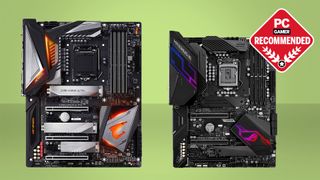
The prizewinning gaming motherboard may not feel like an of import choice, but it's prodigious to get along right. A good motherboard will provide a foundation happening which to design the rest of your daydream trucking rig, and will form a basis to power dormy your gaming experience. Choosing the best motherboard for your system determines case size, memory board options, and how much of a CPU upgrade you can work adequate to.
- Here are the best Black Friday 2022 deals for PC gamers
Though there may not be a massive departure between motherboards packing the same chipset, there are several features aside from performance that thing just as much. Do you want to be able to overclock your CPU? Do you necessitate high gear-functioning RAM support? Do you need a teeny-weeny server's worth of USB ports? These are just some of the things you should consider when acquiring willing to purchase a motherboard.
The Sunday-go-to-meeting play motherboards also give you some tied of future-proofing, as much as this of all time-ever-changing mankind will allow. Whether that's in the form of a socket or chipset that can sustenanc the high-end processors, much atomic number 3 the Intel's Z590 chipset and its Rocket Lake chips, or indefinite that bum deliver next-gen interconnects, such as the B550's PCIe 4.0 support.
We've tested a bunch of some AMD and Intel motherboards over the past year, from Mini-ITX to ATX, so you can bring i an informed decision on which one is going to work best for you.
Best gaming motherboard
Best Intel Z590 motherboard

This is a gambling motherboard positioned as an entrance-level option for anyone looking to feed Rocket Lake. Asus has always positioned its TUF products as reliable options, with decent pricing and a more basic feature set. Combined it means this is a good affordable option for someone aft a no more-flap, solid, and TRUE system. And given the pricing of many Z590 motherboards, that makes for a receive modification.
The TUF Z590 Plus features a subtle design with a particularly pleasant white font. You get a duo of little splashes of RGB around the decently side too. It's a nice look. There are three M.2 slots with the topmost one supporting PCIe 4.0. The two at the backside are contained under a single heatsink. Also, note the vertical SATA ports that sticklers for line direction might find objectionable. There are a further ii regular horizontal ports close to the heatsink. You get half a dozen fan headers and two addressable RGB headers too.
This is a board for anyone WHO would prefer to allocate money towards a faster GPU or larger SSD or else of paying through the pry for 10G LAN operating theatre expensive add-in cards. And I fundament totally take connected board with that. Bang for buck and the true essentials are the name of the secret plan here. If you're on a budget, it's definitely combined to look out for.
Read the full Asus TUF Gaming Z590-Plus WIFI review.
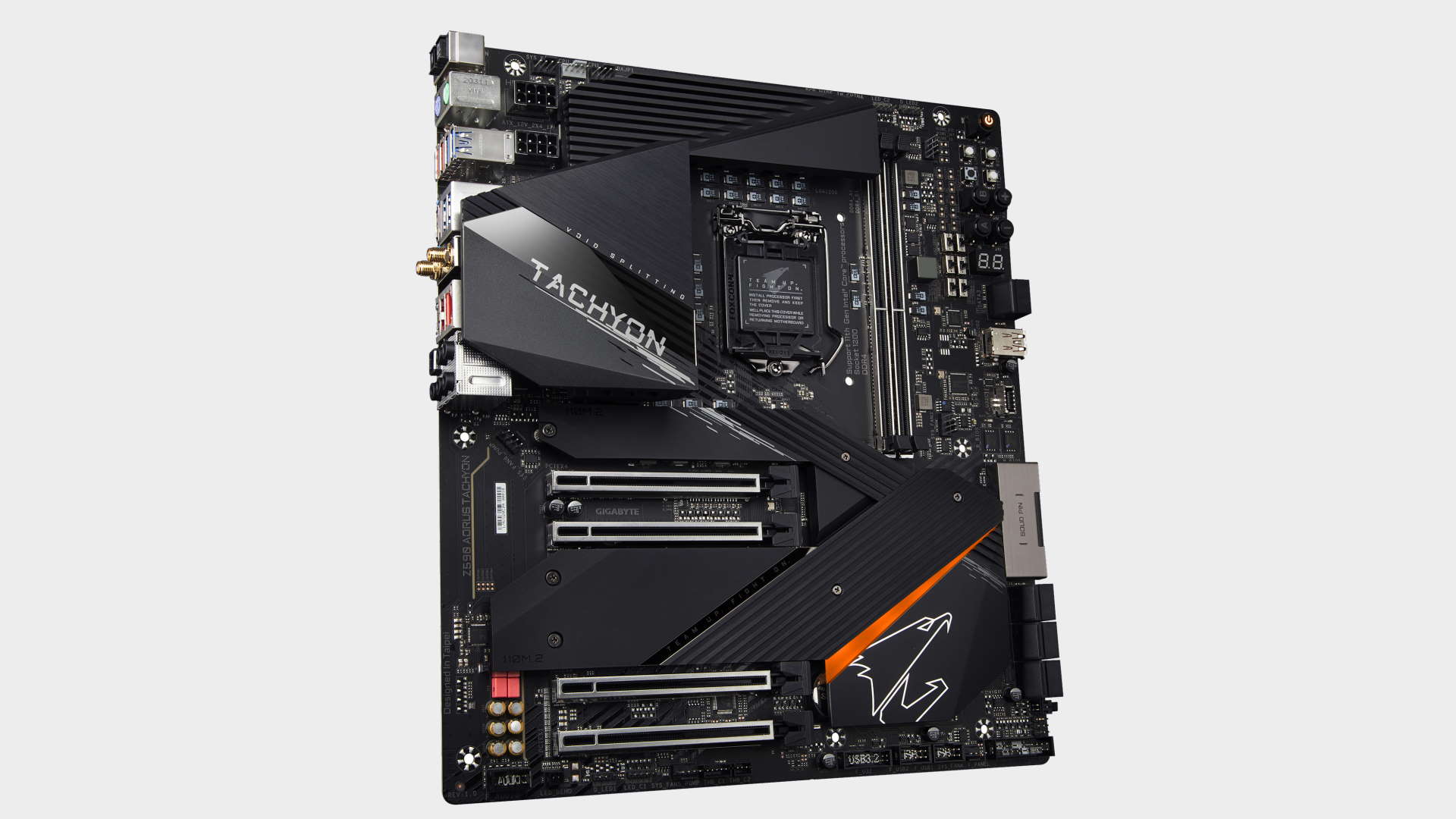
Overclocking focused motherboards have successful a proper return. This meter around all the prima manufacturers possess Z590 boards specifically designed for serious overclocking. The dual memory slot design, all those buttons and switches, a monstrous VRM, and a unequaled layout are all aimed at making life easier for overclockers. Then there's a comprehensive BIOS with extensive tweaking options. IT's clear that this isn't a regular board with a fancy sticker slapped on.
The idea rear having entirely two memory slots instead of four is to minimize trace complexity and bring down the slots closer to the Central processing unit. This helps contract latency and allows for a elflike more performance headroom compared to a four-expansion slot design. The primary PCIe expansion slot is not the upmost one either, it's the one below information technology. This is another choice to aid overclockers who employment LN2 chilly a GPU by allowing extra room for pots and insulation.
The Gigabyte Z590 Aorus Tachyon South Korean won't magically add frequence to your CPU and memory. What it will do is help you to distill the maximum efficiency out of your scheme, no matter what temperature reduction you're using. An partizan who loves to tweak, spending time reduction latency and tweaking sub-timings, or a gamer consecrate to finding a few extra FPS will enjoy peace of idea knowing you've got a dining table that's specifically fashioned to take whatsoever penalization you throw at it.
Learn the full Gigabyte Z590 Aorus Tachyon review.
Best Intel Z490 motherboard
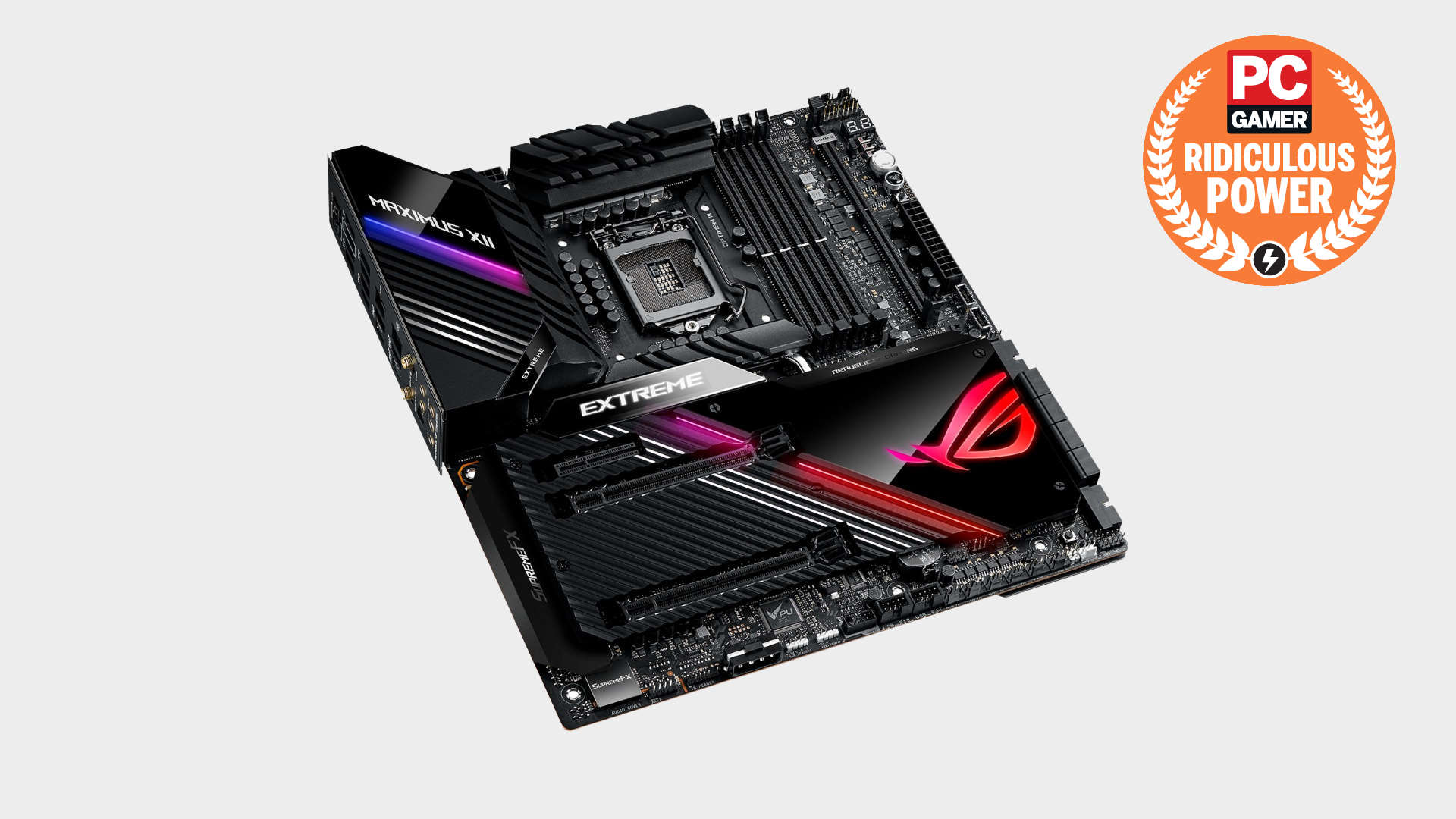
If you desire the outflank, most fully-featured Intel Comet Lake motherboard, and so I'm afraid you're going to have to pay for it. And pay through the nose if Asus' Z490 Maximus XII Extreme is anything to get over away. It is, as the name suggests, extreme, packing in a diversity of luxurious and ready to hand extras (a frickin' screwdriver with standardised heads for one), and it's also one of the highest performing Z490 boards we've tested.
But it simply actually makes sense if you're purchasing a K-series Marrow i9 and genuinely intend to overclock the nuts off it. The Maximus XII will allow you to get the highest clock speed out of your 10900K and North Korean won't bend it into a good deal of molten slag while you're at it. The MSI Z490 Heavenly is actually the fastest Z490 outright at stock speeds, but I'd rather have got the ROG board in my camp if I'm going down the OC route.
Obviously, it's only for the very highest of gamy-end PC builds; however, the $750 price tag means you could actually bod a sizable wax gaming Personal computer for the price of this unvarying motherboard. It's an aspirational Z490 motherboard and arguably the best gaming motherboard for Comet Lake overclocking, just I'll concede it's not a particularly realistic purchase for almost of United States.
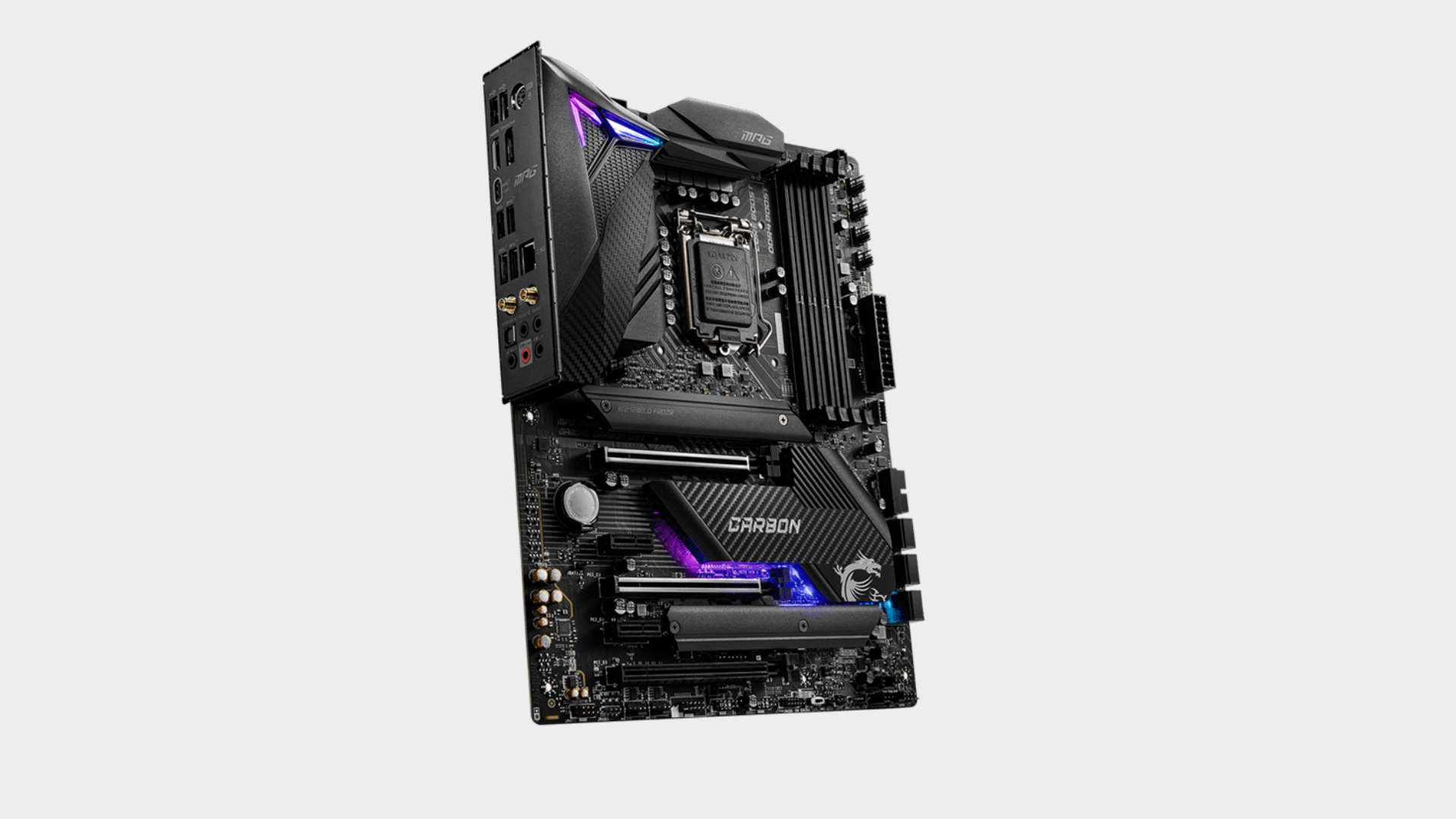
The sparse back panel and missing OLED displays will tell you we're back into normal motherboard territory with this MSI offering. The rarified air of the ultra-enthusiast ROG board up pinch might pee-pee one frivolous, but the Z490 Gaming Carbon will bring America pull out to earth without a bump. Sure, you're never going to get the cookie-cutter rase of luxury feature listing every bit you'll find with either the Maximus XII or MSI's have Godlike boards, but when it comes to the around the bend and bolts of pure performance, it's right up there.
Where IT matters, in the gaming performance stake, there's much nothing between whatever of the Z490 boards we've tested, and it's only ever a trifle behind when it comes to the actual CPU performance in productivity apps. However, when it comes to overclocking, the MPG Z490 Gaming Carbon WiFi inevitably can't compare to the big boys, with our 10900K running at its peak.
The power componentry and temperature reduction aren't enough to stop the thirsty C.P.U. from throttling when it's pushed to its 5.3GHz all-core maximum. Just, while that might mean information technology's not the dining table you'd choose for an overclocked Heart and soul i9 simple machine, that's a tiny niche of gamers, and for either i5 OR i7 CPUs, the MSI Gaming Carbon is still a quality dwelling house for your Comet Lake CPU.
Best Intel B460 motherboard
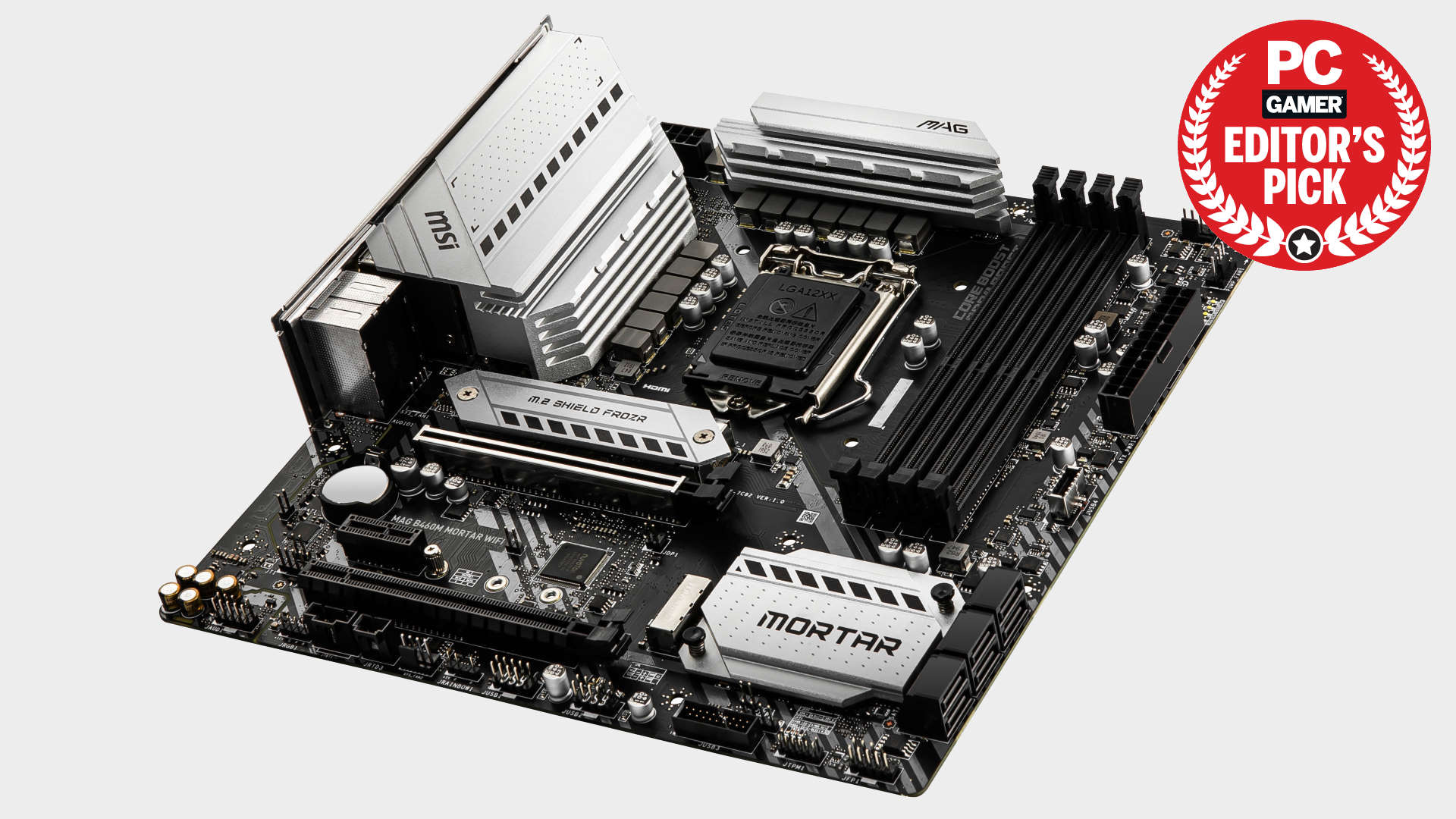
Grabbing one of the unsurpassed Z490 motherboards might be appealing to your innermost elitist, but the sticker price shock is definitely a problem. Sure, it would be nice to wealthy person 10Gb LAN, seven M.2 slots, surgery quad GPU support, but whoreally necessarily all that overgorge? Near of us will be utterly cheerful with a quality B460 motherboard, such as the MSI Magazine B460M Mortar Wireless local area network.
If you can put up with the memory upper limitation and have no intent of overclocking (well, with a K-serial CPU anyway), then this is the kind of add-in that should be connected your PC building wishlist. IT ticks most of the important boxes, and at $125, it's well priced, though the competition is tough with many premium B460 motherboards priced in this range.
It's got a potent VRM configuration, 2.5Gb LAN, Wisconsin-Fi 6, and capable, if not especially outstanding, I/O. Pairing information technology with a 65W not-K processor and having a tops at pseudo overclocking is definitely deserving the minimal efforts too. If you toilet live with the maximum DDR4-2666 speed, something like an Intel Core i5 10600 and B460M Trench mortar, paired with a sufficient middle-rank GPU, would deliver a quality, affordable gambling jazz group.
Read the full MSI Magazine B460M Howitzer WiFi review.
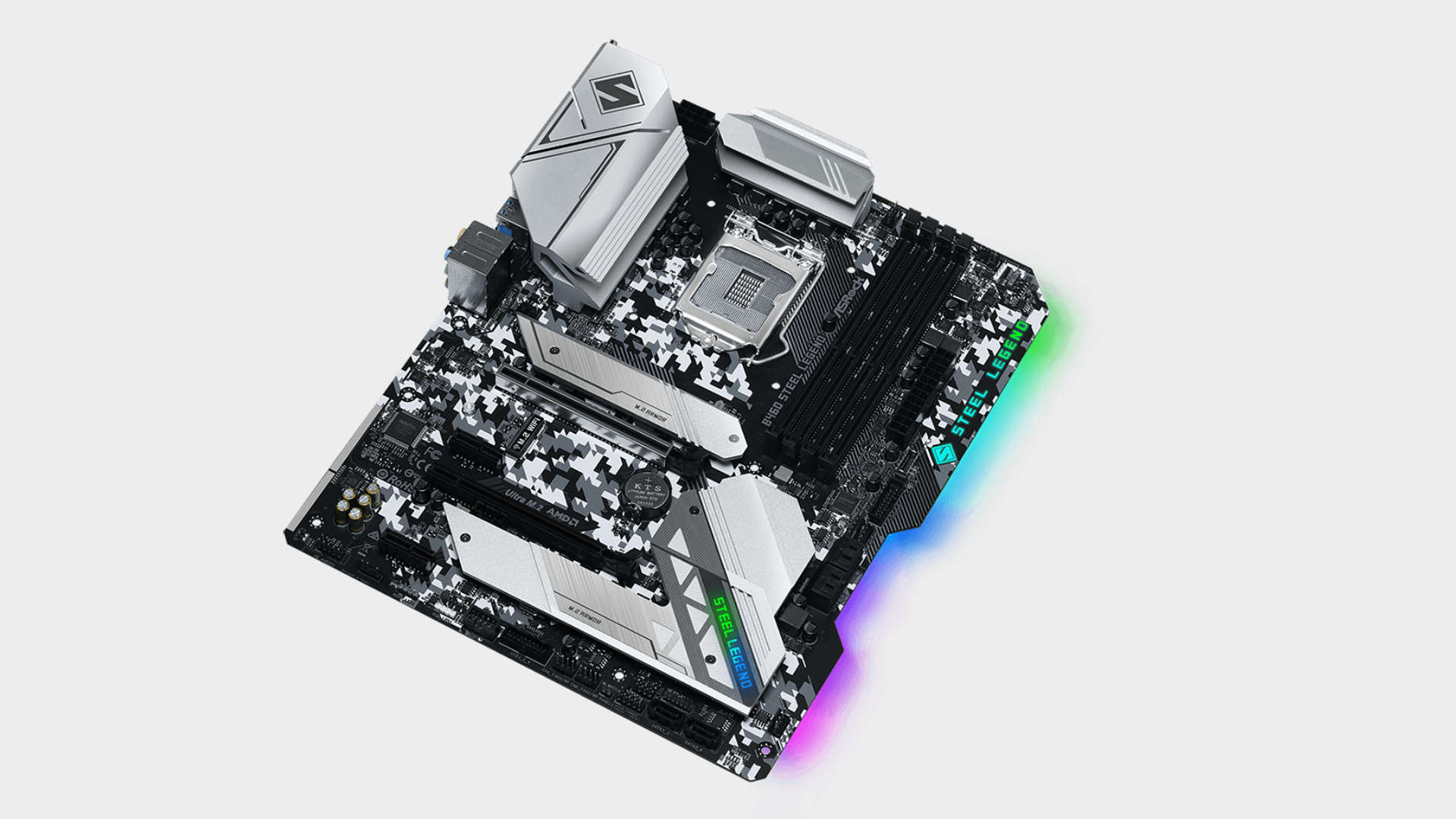
The ASRock B460 Steel Legend is an awesomely named mid-kitchen stove B460 entry. At USD 120, it's what we'd call a mid-range B460 plug-in. A look over the specs indicates that your $120 is well spent connected some important areas. You get a pair of heatsink-sun-drenched M.2 slots, an e-key M.2 slot for an facultative Wi-Fi notice, a frontal USB Type-C header, and a good helping of RGB onboard.
The increased power demands of 10th generation CPUs contemptible motherboards by and large have to include developed VRM designs, and on that front, the B460 Sword Legend is well equipped. It includes a 9+1 phase VRM hopped-up past a one-woman 8-Pin EPS connector. Each microscope stage can deliver up to 60A. Bear in take care that overclocking is not allowed on B460 motherboards, so the VRM will not see extreme oodles as you might get with an all-core overclocked Intel Essence i9 10900K.
The ASRock B460 Steel fable will appeal to buyers who aren't so interested in bells and whistles but privation a solid ATX board capable of powering any 10th Gen CPU without bursting into flames. Integrated Wi-Fi would get been a discriminate cherry connected top for the price, and that's arguably matchless of the reasons we opt the MSI B460M Mortar. But the ASRock B460 Sword legend is still a highly competitive offering and comes extremely advisable by us. IT shows its steel, one might say. If it had Wi-Fi, we might even have said it was legendary.
Translate the full ASRock B460 Steel Legend review.
Optimal Intel Z390 motherboard
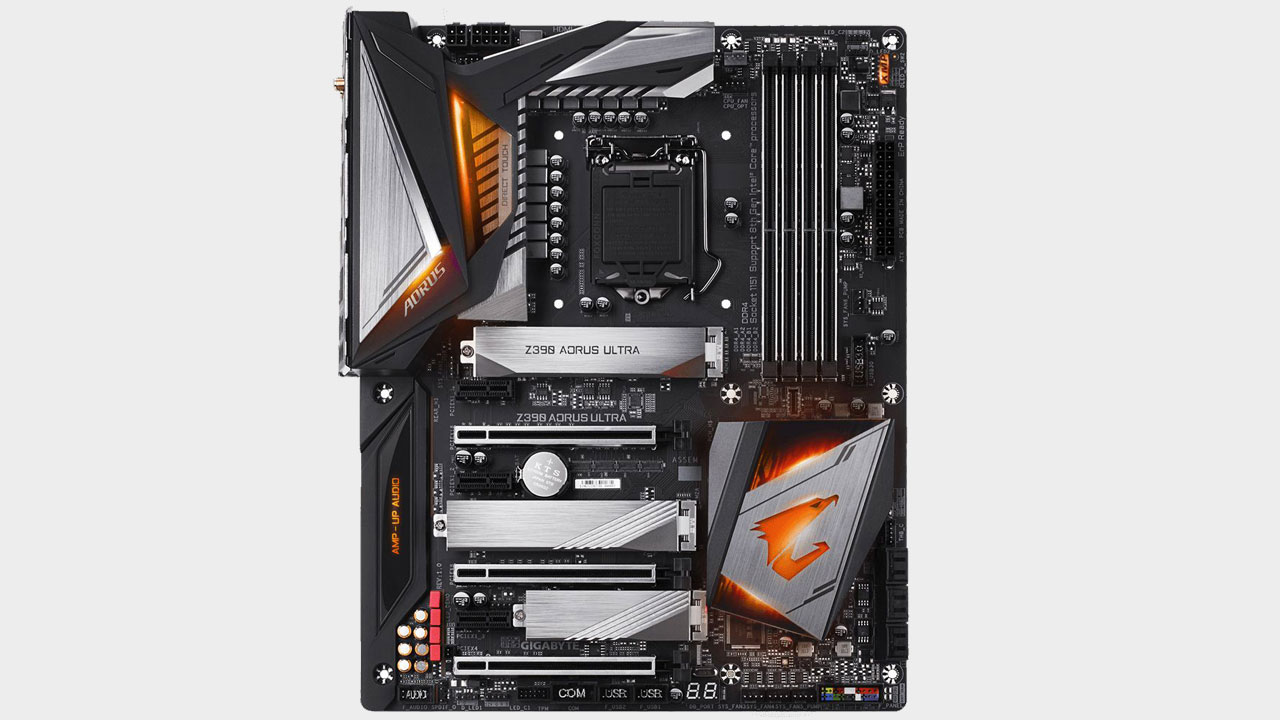
The Gigabyte Z390 Aorus Ultra competes with the MSI Z390 Gaming Pro Atomic number 6 Alternating current and the Asus ROG Maximus XI Paladin (Wi-Fi), lower price tag, and more features. IT has triplet M.2 slots for your super-speedy NVMe SSD necessarily, Intel Wisconsin-Fi Wave2 and ethernet, a engorged RGB treatment with multiple headers, and ALC1220 audio. You'd get to climb right to the top of the product stack to get the same from MSI and ASUS, some of whom offer a little more polish only as wel guardianship plenty for the privilege. Though there's a lot to embody said for extreme motherboards, this is a great time value Intel board.
The only factual downside for us is that this mobo is perchance a little too flashy and may not suit much restrained gaming builds. Thankfully, you give the axe disable all the RGB bling within the BIOS if you privation, though other elements English hawthorn quiet clash. Simply that's a inferior criticism of an otherwise top board.
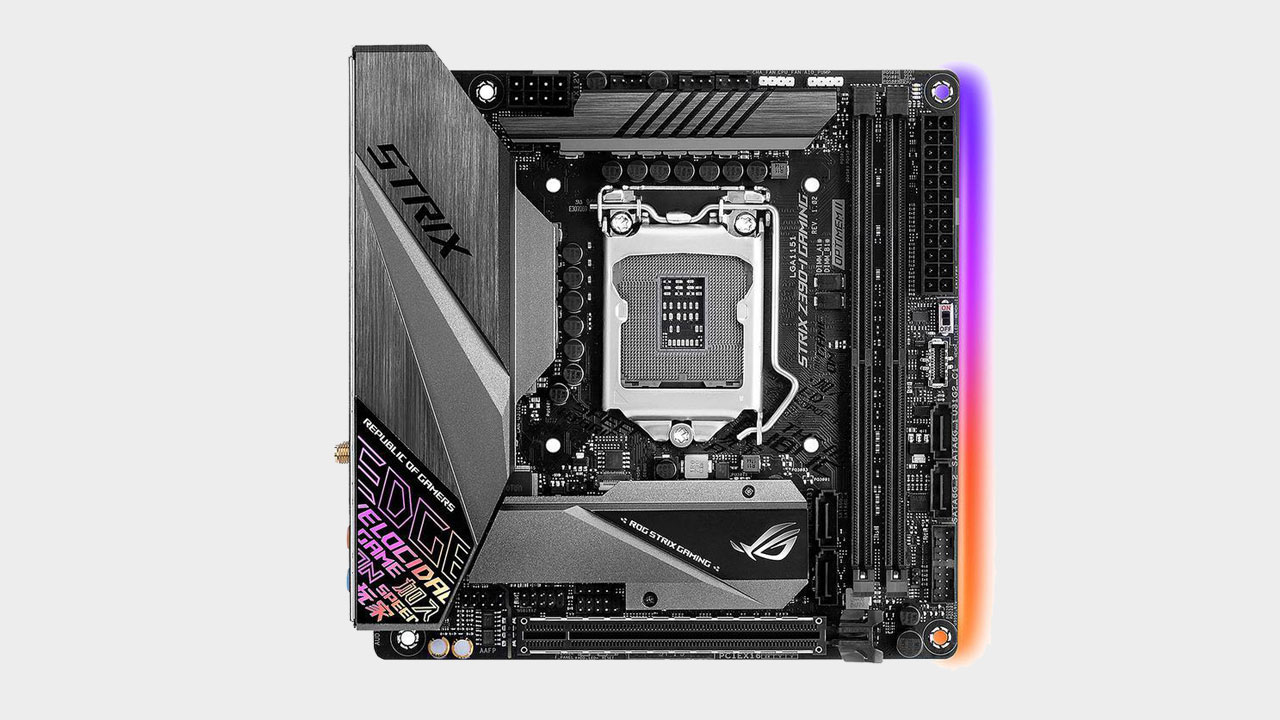
As the price drops and the early Z370-based model disappears from vendors, ASUS's Strix Z390-I Gaming moves into the boutique ITX segment's top spot. Despite its little size and dearth of upgrade options, the ROG Strix Z390-I Gaming provides excellent execution and value. Self-praise stabile 5GHz overclocks victimization several memory speeds, including 3,600MHz with tweaking, its single PCIe x16 one-armed bandit pushed top-shelf graphics card game to speeds that twinned or exceeded almost Z390 ATX boards during testing.
The smallest Strix has a drawn-out features list, with no more shortcomings despite the tiny spring factor, including duple PCIe Gen3 x4 M.2 slots, Intel v219 ethernet, upgraded Intel 9560 2x2 802.11ac Wi-Fi, and an ALC1220A audio codec supported by isolated circuitry and headphone amps. Despite the slow set of features, the Strix Z390-I's unqualified plan makes quickly scheme assembly and configuration an important consideration for ITX rig construction.
It's worthy noting that this board lav follow hard to find, simply the previous generation ROG Strix Z370-I model, with its slimmer design, remains an excellent alternative, especially at clearance prices.
Best AMD X570 motherboard
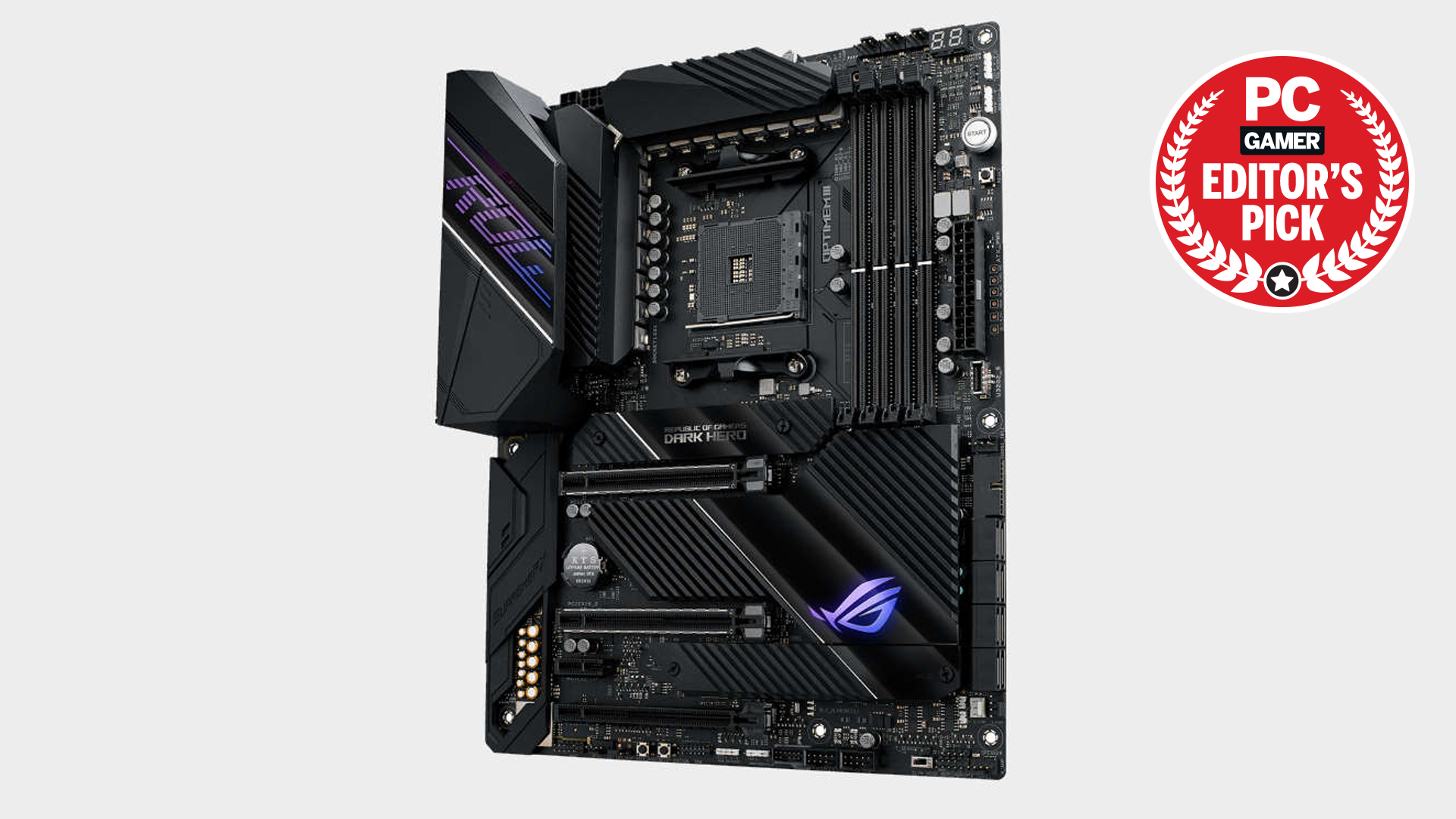
Asus' ROG Crosshair VIII Tenebrific Bomber wants to be the last AM4 motherboard you'll ever need. But what is information technology that makes a great motherboard? Features are historic, as is a stable and refined BIOS, respect for money, a sound design, but sometimes intangible. Sometimes it's that the damn thing works.
Motherboard examination is often one of the virtually harmful things a tech journalist has to do. With some boards, you have to campaign information technology to get it to do what you desire, Oregon expect it to, OR have to or crank up some voltage setting to a level you don't genuinely want to, only the Dark Hero just boots the first clock time, even as we played with the memory pin clover and timings and the Infinity Fabric.
The Crosshair VIII Dark Hero mightiness not be the champion AM4 motherboard ever made, we'd have to review a few hundred others to make that claim, merely IT's an easy claim to make that the Dark Hero is certainly matchless of the best AM4 motherboards we've ever used. Metre and months of user feedback leave determine if the Dispiriting Bomber assumes a set back as uncomparable of the truly legendary ROG motherboards, but we wouldn't recko against that happening.
Read the sperm-filled Asus ROG Crosshair VIII Dark Hero review.
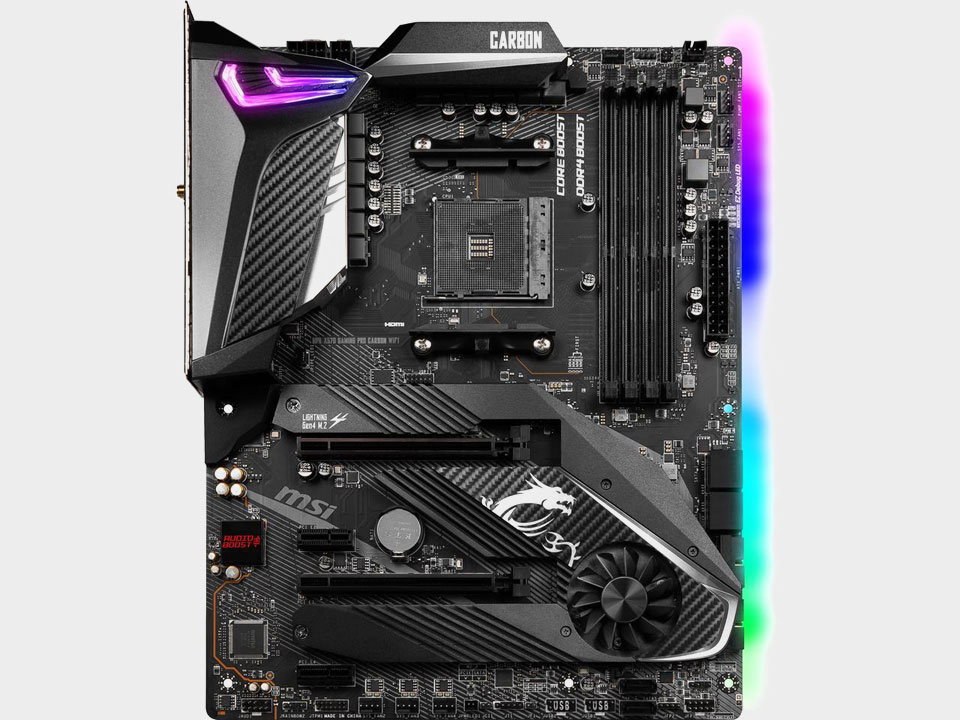
The MSI MPG X570 represents an amalgamation of bleeding-sharpness motherboard tech improved to get the most out of AMD's 3rd gen Ryzen CPUs. Information technology has 4 DIMM slots that can handle speeds up to 4,400Mhz and two M.2 slots sporting PCIe 4.0.
The rear I/O panel features seven USB Type-A ports for peripherals and a single USB Type-C port for connectivity and high-speed data transfer. There are headers for the enclosed Wi-Fi antenna to aid with wireless connectivity, as well as a gigabit ethernet porthole. The MPG X570 supports Badger State-Fi 6, and while that does ask a Wi-Fi 6 compatible router, IT's backward compatible with other Badger State-Fi standards and gives the prospective for a speed boost down the line. Also of note is the HDMI port, which many an X570 boards leave off (non that we'd really recommend victimization an AMD APU with integrated graphics in a towering-end board like this).
The MPG X570 features enough compatibility to bugger off the most out of your hardware forthwith and in the future, provided you're willing to pay a premium for it. While it's certainly an excellent mobo, if you aren't already sworn to a shopping inclination of top-of-the-line components now or shortly, you may want to consider a slightly less expensive board for your needs.

Despite the X570 chipset showing its age, GB's X570S Aorus Master feels like an familiar dog that's enlightened some new tricks. The fact that information technology comes with quatern M.2 slots alone is moving on with properly heatsink. Really the cooling all around gets a thumbs up from us. The finned VRM heatsinks add a ton of rise expanse.
Our simply real knock against the Aorus Skipper simply offers 1 2.5G LAN and lacks 5G which is a bit a bummer. That beingness aforementioned it's notwithstandin one of the advisable AMD motherboards out on that point. I'm a sucker for a motherboard with a long ton of USB ports this mobo has And so many.
The Aorus Master is still keeping AM4 and X570 pertinent thanks to its many USB ports and entrepot options. Even at $400, it's got enough features (and looks good to boot) to justify the higher price point.
Learn the full Gigabyte X570S Aorus Master reassessmen.
Best AMD B550 motherboard
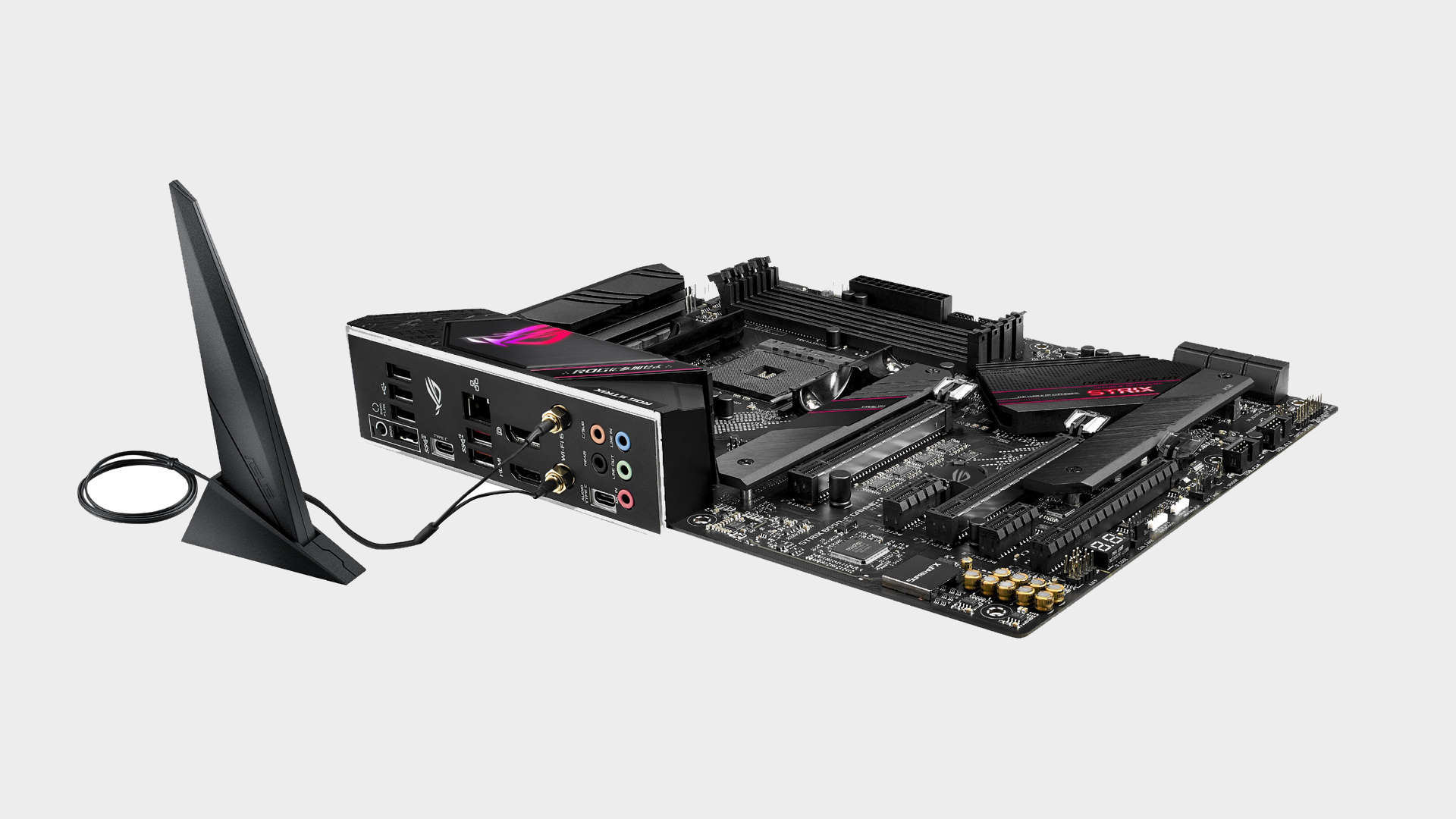
Sure, the Asus ROG Strix B550-E is the same price as else X570 motherboards; in fact, information technology pretty much matches our favorite of AMD's tipto-end boards, the MSI MPG X570 Gaming Pro Carbon. But it's a premium motherboard, with entirely the trappings you'd expect from Asus' Republic of Gamers stables, such as 14+2 power phase, M.2 heatsinks, and pre-installed backplates. You too have Wi-Fi 6 wireless networking as well as Intel 2.5Gb ethernet too. And RGB LEDs, course. If you're looking for at building a Zen 3 system, then the necessary BIOS updates should drop in January for this motherboard.
Performance is typically good for a high-closing Asus board, twinned X570 motherboards for gaming performance without issue. That said, of the B550 boards we've tested, it's the farthest more affordable MSI board that actually comes down top in our straight performance testing. But the Asus can overclock far-off improve, symmetric if it does chew up Thomas More new power from the plug on the whole.
The Asus ROG Genus Strix B550-E Gaming is the whole package then, and right now is our all-around woof for the best B550 motherboard. Though that still feels like a tough recommendation when X570 boards are the same price…
Read the full Asus ROG Strix B550-E Gaming review.
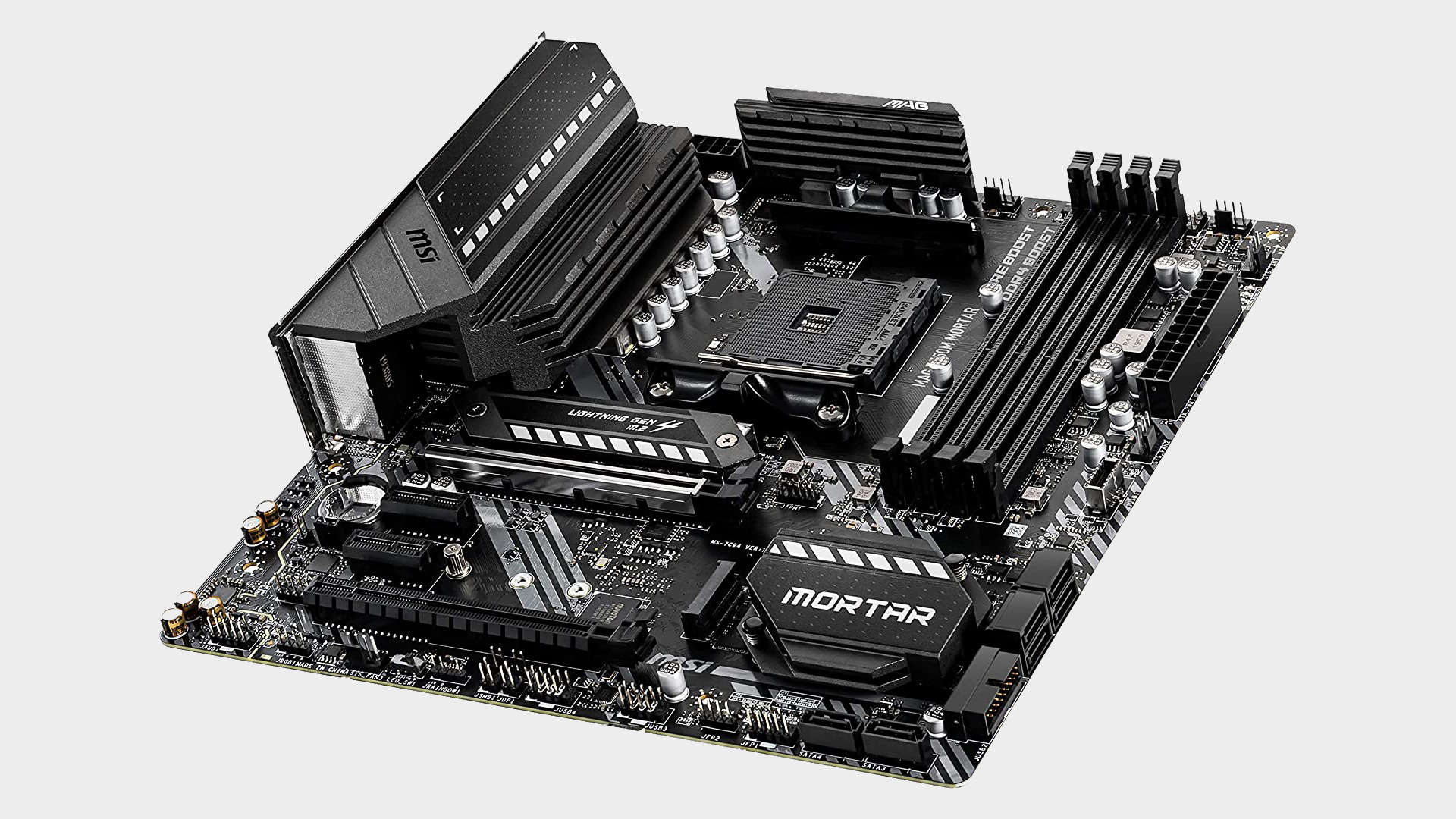
When it comes to play performance above each other, MSI's micro-ATX Magazine B550M Mortar is your best bet for an affordable next-gen Ryzen machine. Information technology comes in around the $160 mark, making IT cheaper than a great many X570 and other B550 motherboards on the market right now.
The gaming frame rates of the MSI B550 Mortar lay out it above the rest of the B550 crew we've tested so far, and indeed its straight CPU performance puts information technology upwards there with some of the best X570s. That bodes well if you're looking for an affordable home base for your AMD Zen 3 CPU of the future (BIOS updates to support Ryzen 5000 chips are out-of-pocket to start rolling call at January); this B550 has a great chance to ensure it performs to its fullest broth-clocked potential without breaking the bank.
But you will be missing come out of the closet on extra PCIe 4.0 M.2 and x16 graphics slots if those extras mean a lot to you. You can also opt to ditch wireless networking, dependent on whether you pick the straight Mortar or the more expensive Howitzer Wi-Fi version. The 8+2+1 power phase design is arguably a more unwelcome miss, however, as that results in a add-in that will not spark any overclocking joy in your heart. Just, as an affordable gaming board without OC pretensions, it's a great shout.
Record the full MSI MAG B550M Trench mortar review.
Prizewinning AMD A520 motherboard
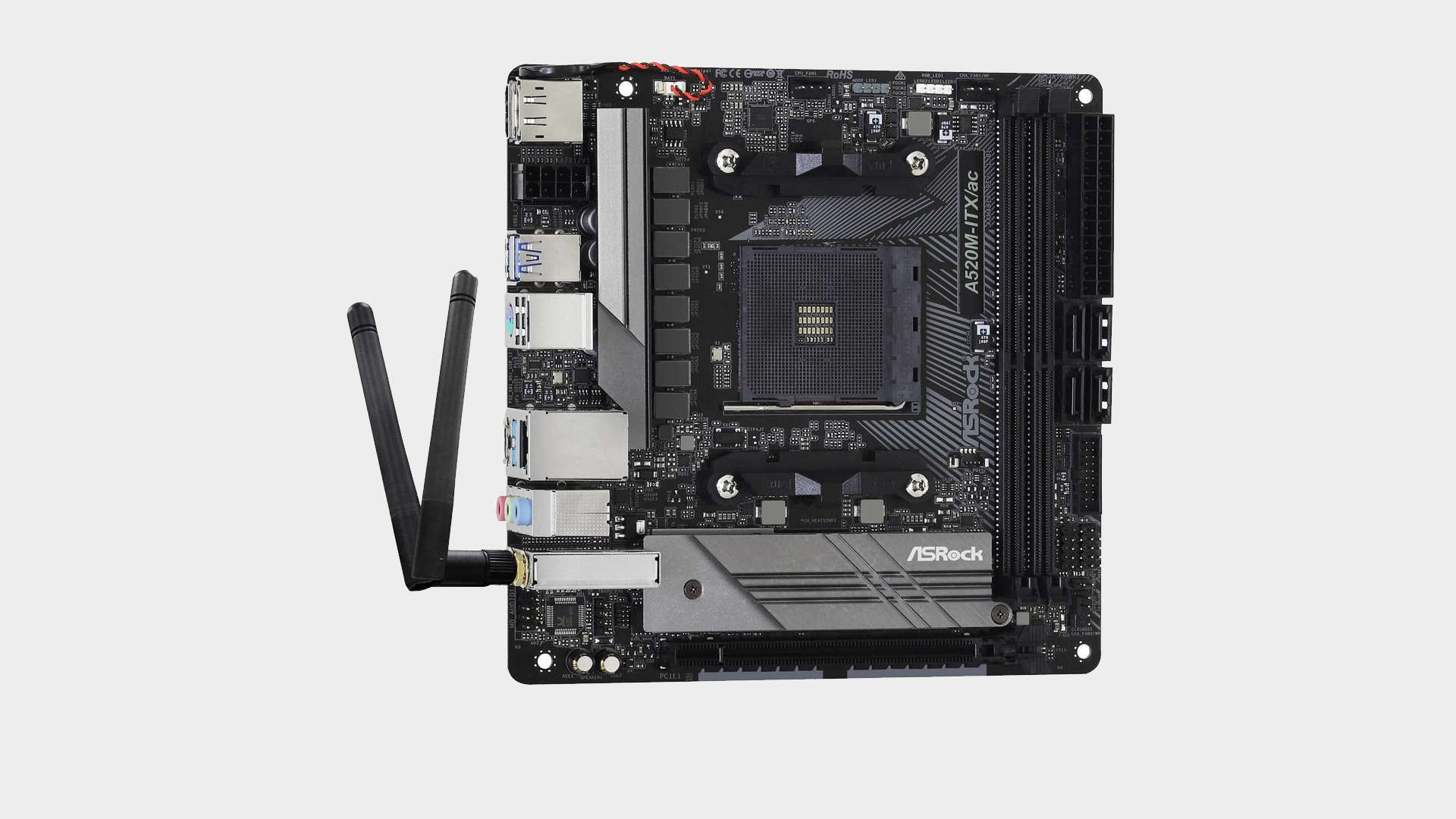
AMD's budget Ryzen motherboard chipset, the A520, has largely slipped under the radar. While B350 and B450 motherboards were mostly regarded Eastern Samoa incoming-unwavering, A320 was purely seen every bit the resolutely short remainder.
The introduction of B550 motherboards, and their associated act ascending in toll, left a big hole in the sub-$100 market. Enter A520. If you'rhenium on a tighter budget and father't care nearly PCIe 4.0 or the overclocking support offered by B550, then the A520 motherboards might be exactly what you need. There's cut-price, and at that place's really cheap, but a decent A520 board rear about cause everything aboard at large the price can.
Then there's the cherry on top, which supports AMD Ryzen 5000 series CPUs and, almost as significantly, Ryzen 4000 series Apus. Combine a Zen 3 CPU with a motherboard such as this ASRock A520M ITX/atomic number 89, and you'll be able to build an affordable and compact system that can all in some Intel contribute whatever workload.
The ASRock A520M's audio is a number of a letdown, just that's something that budget boards often compromise along. A gamer listening to compressed audio assets in-game probably South Korean won't be any less immersed. The short ASRock A520M ITX/ac has it where information technology counts and will serve you well at the heart of a budget gaming system. IT benefits from the strengths of the Ryzen platform and adds whatever future-proofing into the mix. ITX fans looking a capable budget AMD Ryzen choice should definitely have this one on their short list.
Read the inundated ASRock A520M ITX/ac review.
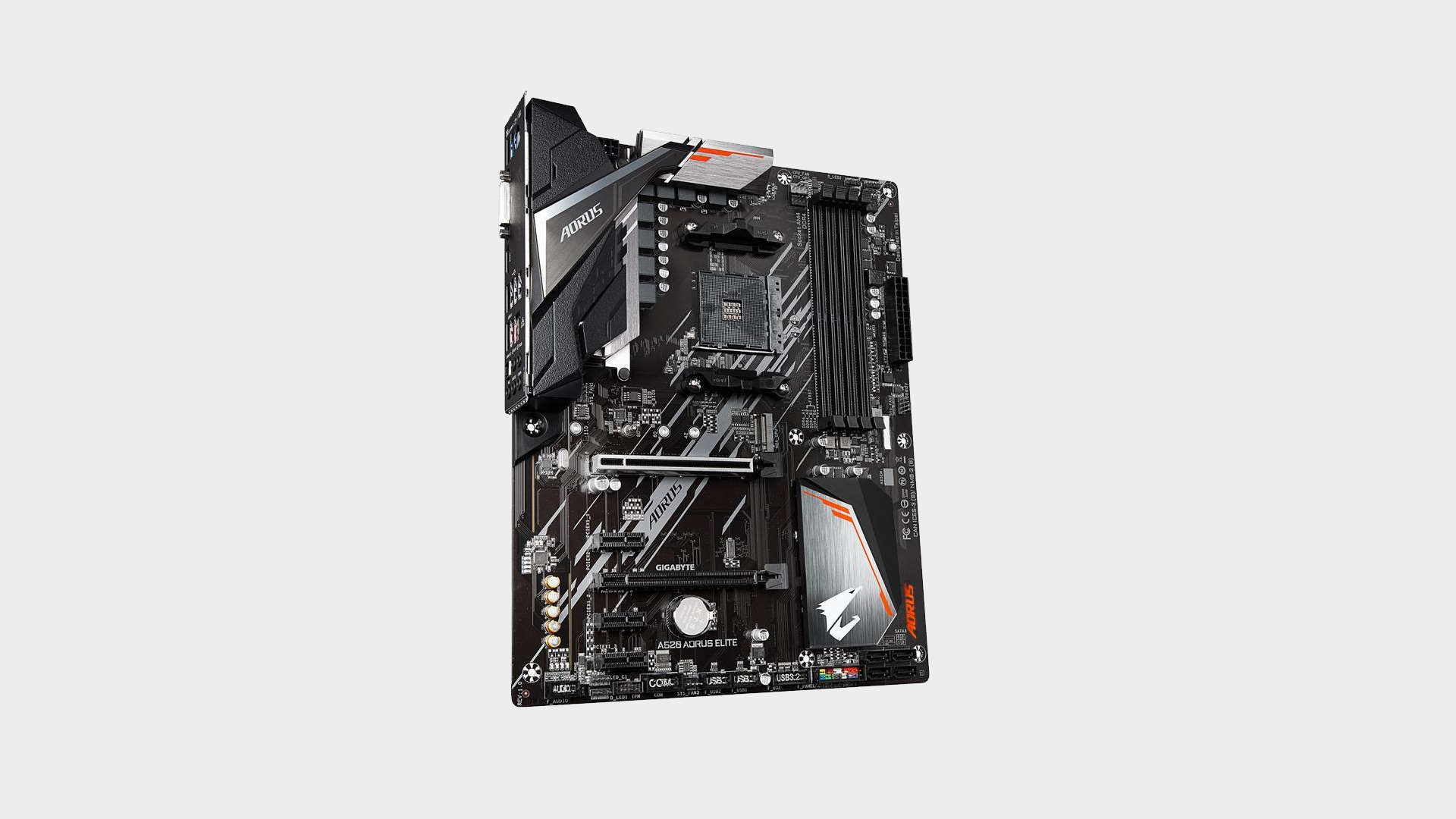
AMD's A520 motherboard chipset might not make for the sexiest of PC components, that's unquestionable. You probably wouldn't buy one to take place at the heart of your water-cooled make or Nvidia RTX 3090 gaming system. When you look at the chipset itself, information technology doesn't really girl stunned in terms of real-world essential features. There's none PCIe 4.0, but no Intel systems have it either, not until Rocket Lake next year.
The GB A520 Aorus Elite group is a high-end A520 board, which power appear oxymoronic, only if you didn't know what IT was, you'd be forgiven for assuming information technology was more of a mid-range board and non a $90 bargain. It's even got two RGB headers and a further two ARGB headers. About the only thing it really lacks is Wi-Fi, on the other hand do you really expect to have Wi-Fi at this price?
Gigabyte deserves acknowledgment for including audio frequency built around the ALC1200 codec. Usually, this is reserved for use with more expensive motherboards. If you're on a budget, this GB A520 Aorus Elite is advantageously worth a look. IT leaves Intel's budget B460 boards superficial weak in comparability, plus you get the benefit of following-generation Ryzen compatibility. Is it for everyone? No, but the Gigabyte A520 Aorus Elite group, unequal almost all preceding A320 boards, decidedly does non mean cheap and nasty.
Read the instinct Gigabyte A520 Aorus Elite review.
Gaming motherboard FAQ
What's the most chief factor in buying a motherboard?
You need to know which processor you want to be construction your new rig around. Are you securely tying yourself to the mast of the good transport Intel as it plows on through with the roughest waters it's known? Or are you going to fly the flag of AMD proudly? Surrendered the AMD Ryzen 5000 CPUs' execution, I know where I'd be putting my money.
What really matters when buying a motherboard?
Some other than knowing which processor you'ray active to be try-on, size matters when picking up a motherboard. If you'rhenium building verboten a standard ATX scale gaming PC, then pretty very much any motherboard is open to your whims, only if you want to go for a smaller chassis, either Micro ATX or Miniskirt ITX, so you'll pauperization a similar mobo.
That doesn't necessarily mean sacrificing performance or Florida key features anymore. A man-to-man PCIe time slot is more than enough for nowadays's SLI/CrossFire-less GPU world, and even several Miniskirt ITX boards will come with multiple M.2 SSD slots.
The scale wish impact pricing, notwithstandin. Interestingly Small ATX boards are often the most affordable, while Mini ITX options can be the most expensive. We've picked our top two favorite play motherboards for to each one of the main Intel and AMD chipsets to give you the best options around.
Can I overclock on any motherboard?
Atomic number 102. There are absolutely restrictions in place to stop that, especially on the Intel side. It has opened up memory overclocking across its 500-series chipsets, only still, the Z590 is your only fortune of overclocking the latest Rocket Lake K-series CPUs. Only don't worry, they don't overclock OK.
AMD is more generous, allowing all its CPUs and nigh of its motherboard chipsets. Basically, if you pee sure non to go for the cheapest Ryzen board, combined with an 'A' at the front of its nomenclature, then you're good to tweak. Though again, in that respect really are limited returns.
Jargoon buster - motherboard terminology
ATX, Micro-ATX, Mini-ITX
The most common bod factors/sizes of a motherboard from largest to smallest, which on the far side forceful dimensions determines which cases it'll fit into and (broadly) how many expanding upon slots are available. There are other, less common cast factors (Forty-ATX, HPTX, etc.), but these troika are the most present consumer form factors.
USB Header
A connector on the motherboard that allows you to run a cable system to the case to add additional USB ports, typically connected the front panel (though some cases provide top or bring up panel slots as well).
BIOS/UEFI
Alkaline Stimulus/Output System/United Extensible Firmware Interface connects the ironware and software that lives on the board (the firmware) to the operating system (OS, such as Windows OR Linux). They allow you to adjust system-level settings, so much as fan speed or RAM frequency. UEFI has largely replaced the older BIOS standard.
Expansion Slots (PCIe Slots)
Peripheral Component Interconnect Express slots on the motherboard are designed to accommodate board cards like graphics cards, SSD cards, dedicated sound card game, etc. PCIe slots are measured in both length (x16, x8, x4, x1) besides as by the number of data transmission system lanes they cater (x16, x8, x4, x1). It's possible for an x16 time slot to only provide 8 lanes of data, for instance, which means the maximum possible information transfer rate is halved (though in many cases, because PCIe provides much a high ceiling for transfer speeds, a frown number of lanes doesn't wee a tremendous difference).
DIMM Slots
Double In-Line of credit Memory Faculty slots, the slots on a motherboard where your RAM lives. The number of total slots contributes to the maximum amount of Drive your organisation can handle, paired with the chipset and OS.
Chipset
The logic allows the various parts of a motherboard to talk to apiece other. The chipset determines which central processor generations a motherboard is compatible with and what add-in cards can embody used.
SATA Ports
Ordering Advanced Applied science Attachment ports, an interface for connecting storehouse devices/drives to a motherboard (HDDs, SSDs, physics drives, etc.). The number of physical ports on your board, combined with ports for NVMe storage, will determine the total number of storage drives you can have connected to your PC at whatever time.
Where Can I Connect Chasis Fans on on Asus Z390 Rog Strix Mobo
Source: https://www.pcgamer.com/best-gaming-motherboards/

Post a Comment